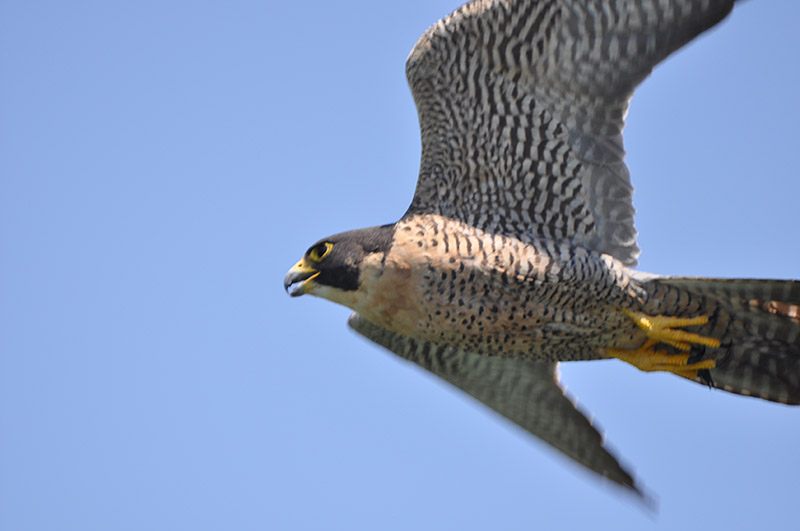To Outsmart a Rogue Drone, Think Like a Falcon
Researchers have strapped cameras onto raptors to see how they target their prey.

Rolling green hills recede as a drone buzzes up and away from the scientists controlling it. It yoinks behind it, at the end of a tether, a fluttering decoy that flaps and tumbles like a bird in flight. Suddenly, on the drone’s video feed, a brown speck appears on the horizon, and—swoop!—arcs to the front of the frame like a bolt of lightning. A peregrine falcon snatches the dummy bird and makes off with it, gone somewhere over the emerald knolls as quickly as it appeared.
Birds of prey are notoriously swift and effective airborne hunters—some can scud at their targets at up to 200 miles an hour. A new study, published today in Proceedings of the National Academy of Sciences, looks for the key to this bloody precision, and suggests that the falcons’ attacking technique offers hints for how to design tools for taking out drones.
To understand how the birds are able to follow such clear paths to their “uncooperative targets” at such high speeds, researchers at the University of Oxford’s Department of Zoology outfitted birds with GPS receivers and small digital cameras to track them and see what they see as they zoom toward targets, such as food lures hurled into the air by a falconer or tugged along by a drone.
The choppy scenes above and below show “how peregrine falcons intercept moving targets that don’t want to be caught,” said principal investigator Graham Taylor in a statement. “It turns out that they do this in a similar way to most guided missiles.” The trick seems to be in the birds’ capacity for what is called proportional navigation. Instead of barreling down a straight course, the birds are constantly assessing their position relative to the prey. Sometimes, one might twirl in a curlicue and then lock onto a path parallel to its target only when it’s poised to strike.
This information is newly useful in part because of the explosive growth of the drone industry, which sold around 2.4 million units in the United States last year. The Federal Aviation Administration has released guidelines designed to keep the industry from spiraling out of control, even as some companies imagine speckling the skies with the flying robots. But airspace can get crowded, and good intentions can’t be legislated, so taking out drones that aren’t flying by the rules is a subject of interest. Officials in France and the Netherlands, for example, have already tapped eagles to intercept drones hauling alleged contraband. This new research builds on that idea, with the notion that, instead of training birds to drop drones, designers could make anti-drone drones that behave more like birds.
Biomimesis—borrowing from nature to solve some human problem—has a rich history in the design and manufacturing world. Architects, for instance, might look to animal habitats, eggshells, or bone for guidance in building durable, sustainable structures. It’s an idea that’s ready to take wing.





















Follow us on Twitter to get the latest on the world's hidden wonders.
Like us on Facebook to get the latest on the world's hidden wonders.
Follow us on Twitter Like us on Facebook